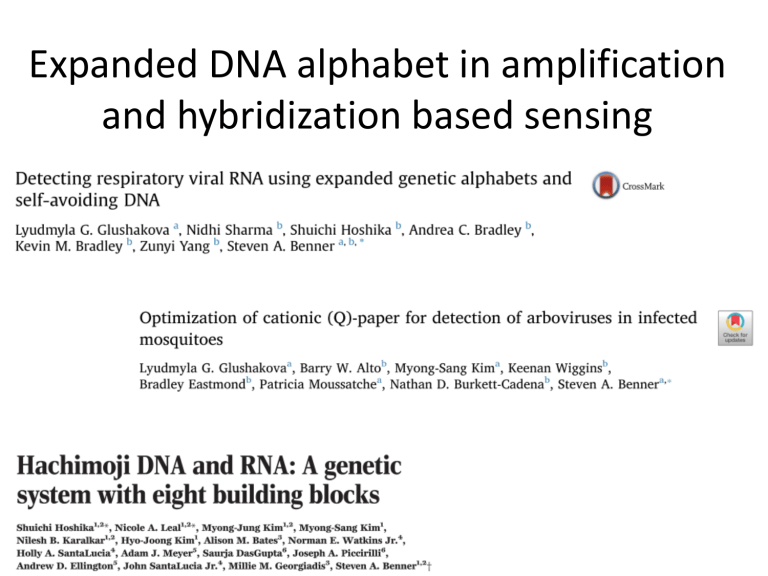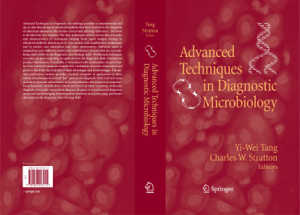
Expanded DNA alphabet in amplification and hybridization based sensing Multiplexed PCR sensing Advantage • Cheaper to run • Simpler/faster assay setup Challenges • Lowered sensitivity • Lowered accuracy Some sources of multiplex challenges (and general) are optimizing interactions between various primers, probes, and sample Expanded genetic code: artificially expanded genetic information systems (AEGISs) • Extra bases Z and P, evolved DNA polymerase will replicate them • In lieu of dC, the polymerase used can incorporate the deprotonated form of dZ • Enables PCR reaction to generate A-T-G-Z amplified fragments – Enhances specificity of amplification Detection with Z:P pair probe self-avoiding molecular recognition systems (SAMRSs) Paper based DNA prep • Ammonium (-NH3+) based paper was optimized: capillary mosquito saliva extract on paper wash, then elute with ammonia spin column desalt RT-PCR, then ATGZ PCR, then hybridization to fluorescent probe Expanded alphabet part (2): • Featured in Science in Feb 2019 • Works with an evolved RNA polymerase • Doesn’t work with DNA polymerase • Future applications could include SAMRSs PCR sensing, and aptamer evolution with greater chemical diversity





